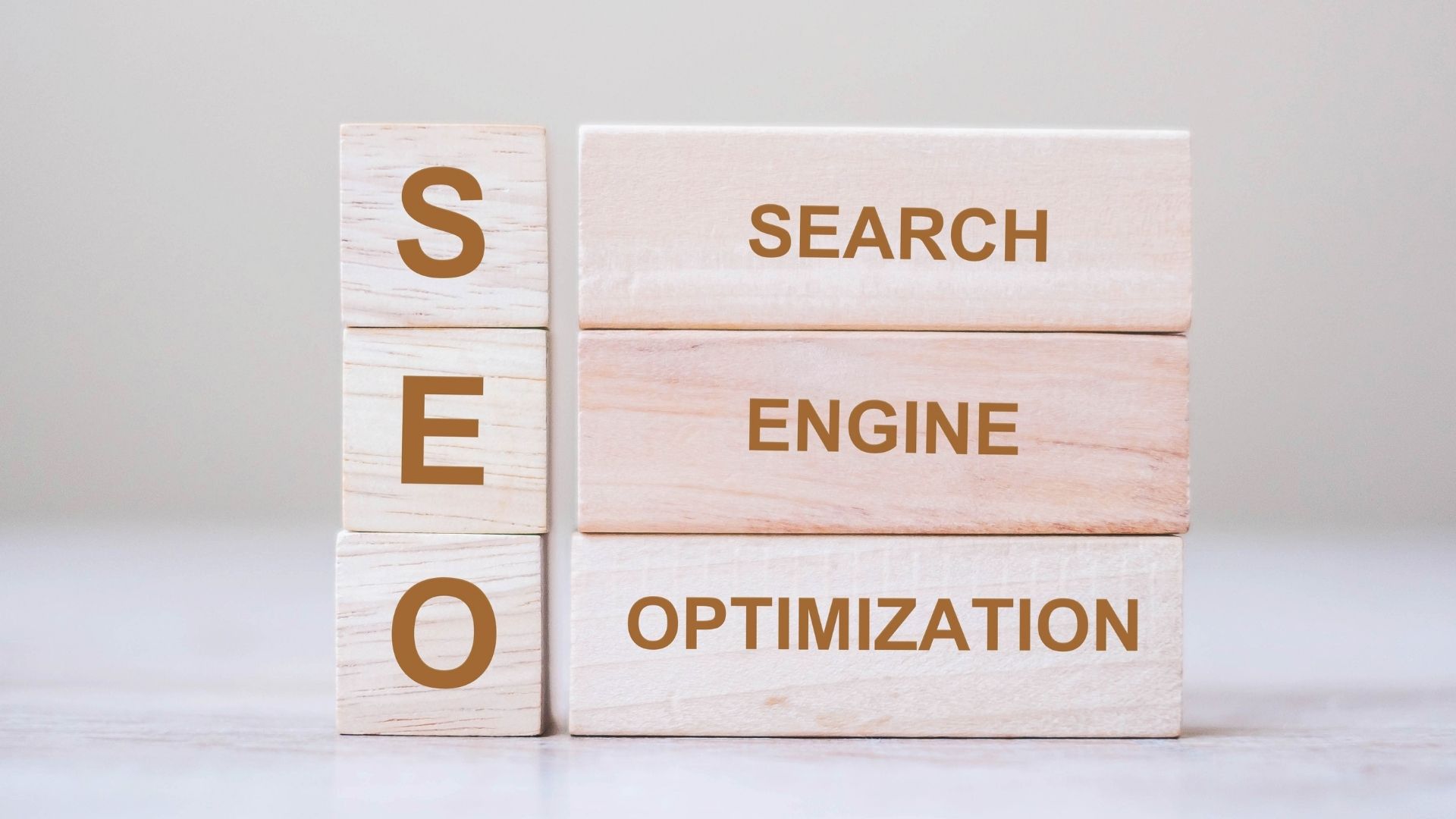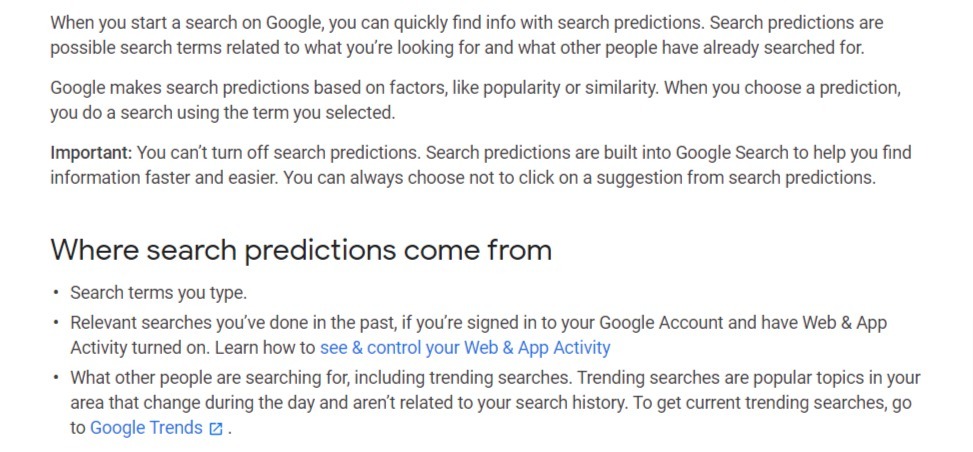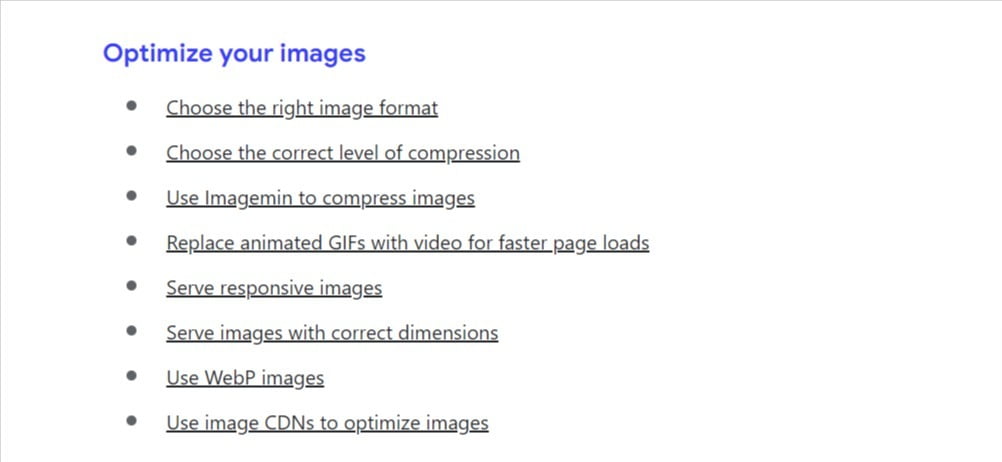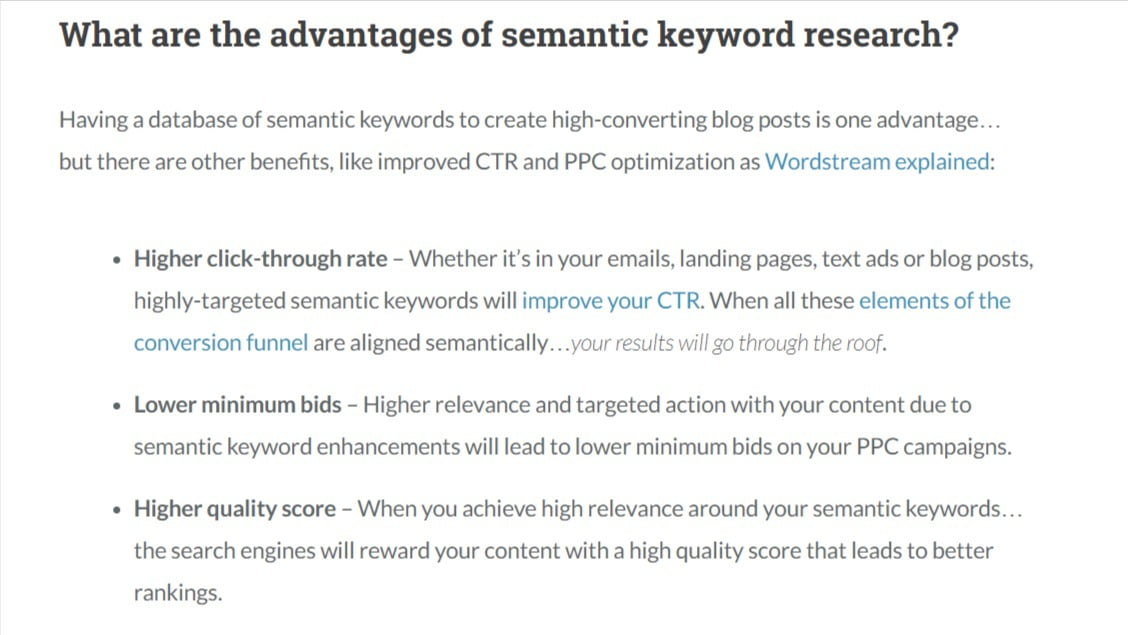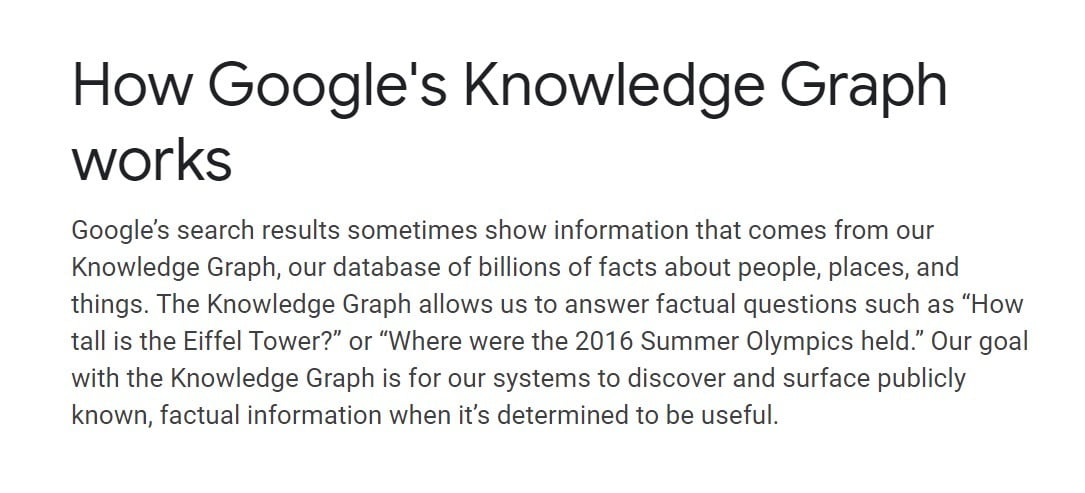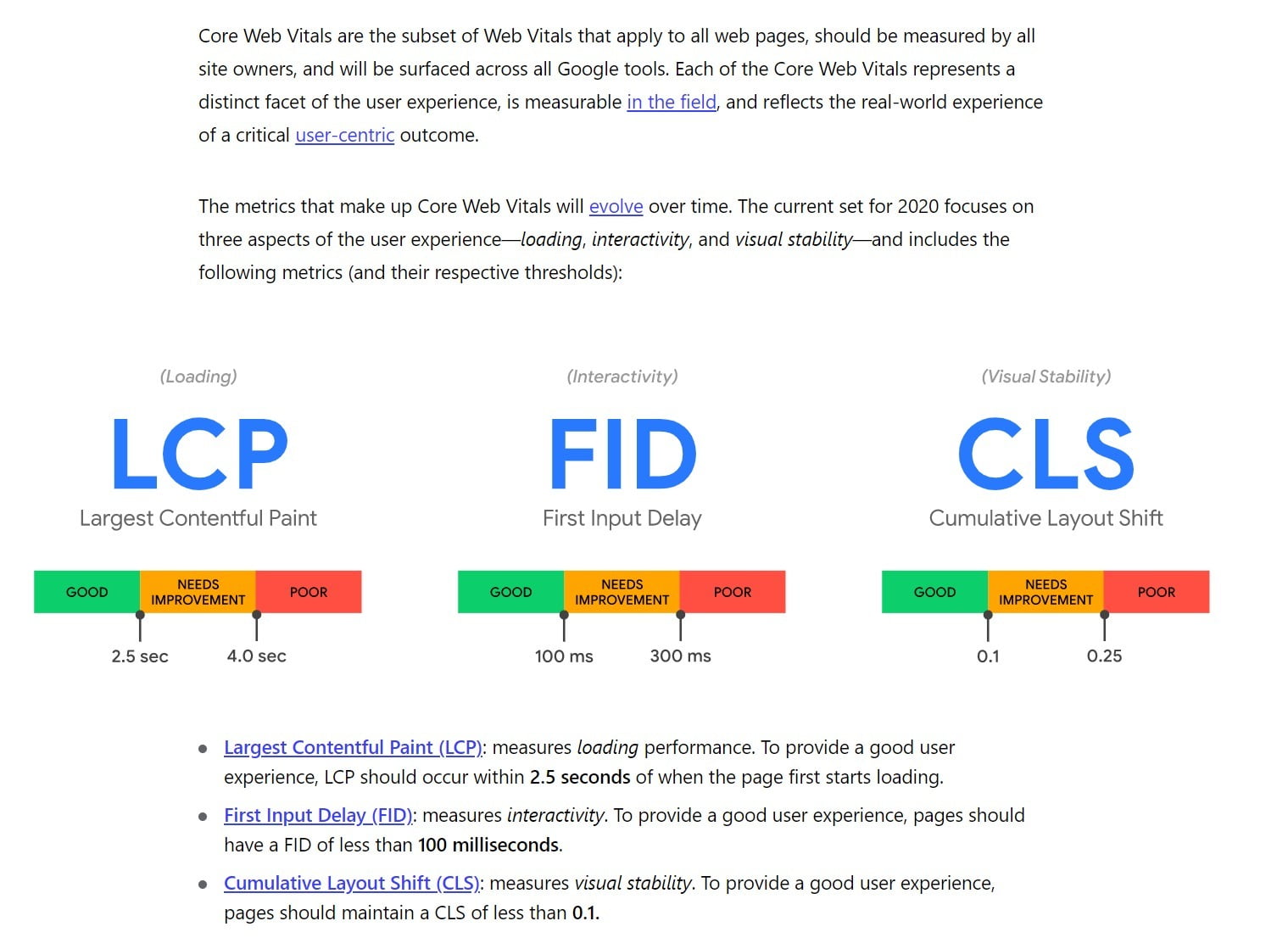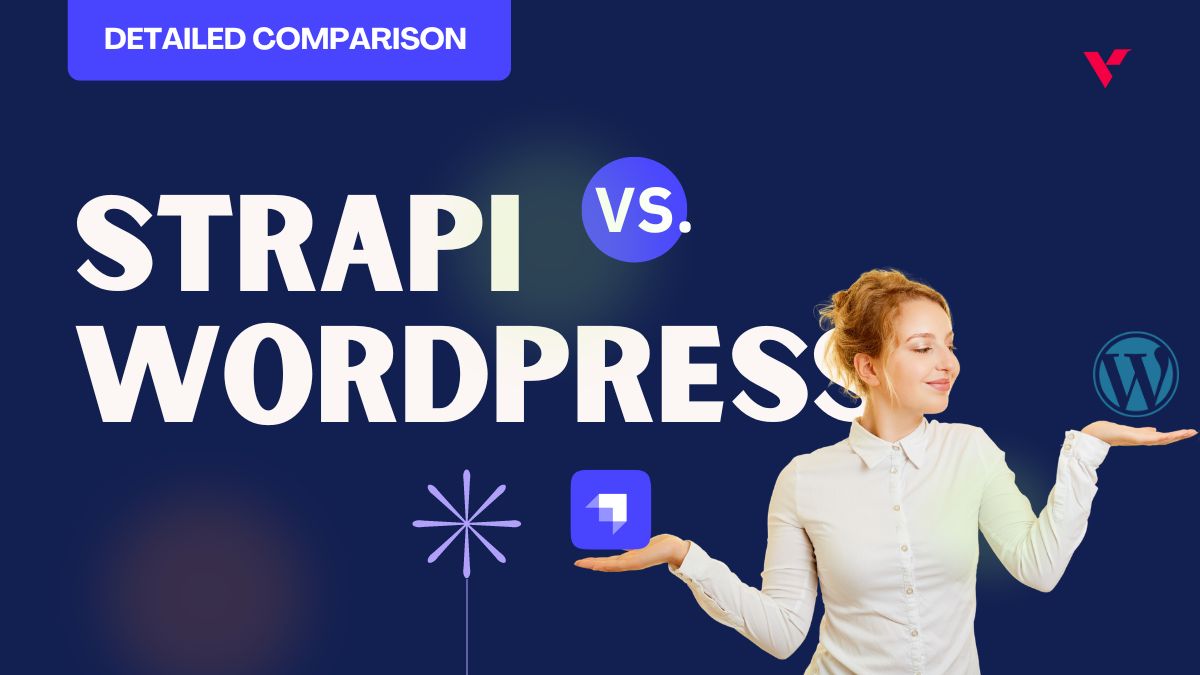Popular Tools by VOCSO
Boosting your incoming organic traffic and Google SERP rankings are vital factors in building a successful site. A tactful deployment of SEO will satisfy integrated algorithmic criteria, fruitfully achieving a higher ranking. Google’s ongoing updates in such metrics require attention in this dynamic industry. Additionally, preferences and user trends significantly influence the fidelity of your service delivery, subsequently affecting rankings. Therefore, you need to always be synchronised with this, structured data and local demographics. Below is a review of all these aforementioned factors to consider, as we explore SEO Trends in 2022.
Table of Contents
Here are the top SEO trends to watch out for in 2023
1. Updating content
Updating content on a website is important for a variety of reasons. For starters, fresh and relevant content can help improve the user experience. This, in turn, can help improve the ranking of a website on search engines, as content that is regularly updated and relevant is seen as more valuable.
Furthermore, updated content can help keep visitors coming back for more. With new and interesting content, visitors are more likely to return to your site and engage with it.
As the landscape of digital content evolves, it is important to constantly stay on top of trends and create content that is evergreen and provides long-term value. Over the next couple of years, there will be sites that create better content than yours, so it is important that you take steps to ensure that your content stands the test of time.
To make evergreen content, you need to frequently water it for more useful information and insights. This means that you need to keep up with the latest news and developments in your industry and ensure that your content is up-to-date and relevant.
You should also create content with a long-term perspective in mind, as this will ensure that it remains useful even after years have passed. By taking these steps and investing in your content creation process, you can create content that will continue to bring value to your readers and customers long after it has been published.
Updating old content can boost SEO ranking because it can improve the relevance and freshness of the content for users and search engines. New or updated information can make the content more valuable and useful to readers, which can increase engagement and shares. Additionally, when search engines see that a website is regularly updating its content, they may interpret it as an indication that the website is actively maintained and relevant, which can improve its overall ranking. Additionally, updating old content can also fix any broken links, improve website navigation, and fix any technical issues that may be impacting the website’s ranking.
2. AI content
The world of website content is about to get a major upgrade. In the last few years, there have been considerable improvements in AI-based content creation, and we expect to see more websites turning to AI-generated content. This is great news for website owners, as artificial intelligence can help create content that is more efficient than ever before.
With AI-based content, websites can be sure that their content is up-to-date, accurate, and engaging. AI can also help create content that is more tailored to the needs of their readers, as it is able to analyze data and tailor content accordingly.
AI-generated content can also help save time and resources, as it can be created quickly and easily with minimal effort. AI-based content is the future,
For content creators, the prospect of relying on AI can be overwhelming. But the reality is that with human input and adjustment, AI can generate perfect content.
AI-generated content can be effective for SEO ranking in several ways:
Freshness: AI can quickly generate new content, allowing websites to regularly update their pages with fresh information, which can boost their SEO ranking.
Relevance: AI can analyze data to understand what topics and keywords are trending and relevant to users, which can improve the relevance of the content for users and search engines.
Optimization: AI can analyze the content and optimize it for SEO by including relevant keywords, meta tags, and other optimization techniques.
Automation: AI can automate the content creation process, allowing websites to produce high-quality content at scale, which can help them to compete with larger websites.
Personalization: AI can help to create a more personalized experience for the users, which can improve engagement and user experience.
It’s worth noting that AI-generated content should still be reviewed by human editors for quality and accuracy to ensure that it meets the needs and expectations of users.
3. Google’s Dilemma to identify AI content will continue
Google’s ongoing quest to find and evaluate content written by artificial intelligence (AI) is likely to be a thrilling and dynamic journey. With the advancement of machine learning, AI is now capable of creating content that is as good as that created by humans. This opens up a world of possibilities for content creators, marketers, and business owners who want to leverage AI to create content that is more engaging and effective.
But while AI has improved significantly, it’s not quite ready to take over the content-creation process, and it looks like it may take a few more years before Google can properly evaluate AI-generated content and determine its relevance and reliability. In the meantime, businesses can still benefit from AI-generated content by using it to supplement their existing content and gain insights into their target audience.
AI is being used as a tool to assist in the content creation process, and for this reason, it is difficult to detect 50% of human involvement. It is clear that Google will face a major challenge in its efforts to assess AI-generated content for the foreseeable future.
Google and other search engines may have a difficult time identifying AI-generated content, as it can be similar to content created by humans. However, Google is constantly updating its algorithms to better identify and understand AI-generated content. Google may use techniques such as natural language processing (NLP) and machine learning (ML) to analyze the content and understand its quality and relevance. Additionally, Google may also rely on user engagement metrics such as click-through rates and bounce rates to determine the quality of the AI-generated content.
It’s also worth noting that Google’s policies encourage webmasters to disclose when content is generated by AI and to ensure it meets the same quality standards as human-generated content.
In conclusion, while AI-generated content may pose a challenge for search engines to identify, they are constantly developing new methods to identify it and ensure it meets quality standards.
4. Google to reduce crawling and indexing frequency
Google’s recently-implemented crawling and indexing changes are a game-changer for webmasters. By cutting down the number of times Google crawls a website, search engines can save a tremendous amount of resources. This means websites won’t need to be crawled as often, which will help save time and money.
It also makes it easier for search engines to find relevant content, since it reduces the need to crawl an entire website to identify the most important pages. This change could have a major impact on website owners, as it makes it easier for their content to be indexed and ranked.
This, in turn, can lead to more organic traffic and an increased chance of success. All in all, it’s an exciting move by Google and one that webmasters should take advantage of.
Google may reduce the frequency of crawling and indexing a website for various reasons, such as:
Website Quality: If Google finds that a website has low-quality or spammy content, it may reduce the frequency of crawling and indexing the website to prevent it from ranking in search results.
Server Load: Google may reduce the frequency of crawling and indexing a website if it finds that the website’s server is unable to handle the traffic generated by Googlebot.
Duplicate Content: Google may reduce the frequency of crawling and indexing a website if it finds that the website has a high amount of duplicate content, as it may not be necessary to index multiple copies of the same content.
Crawl Budget: Google may also reduce the frequency of crawling and indexing a website if it has a limited amount of resources available to crawl the web and it has to prioritize the most important sites.
It’s important to note that reducing crawling and indexing frequency doesn’t necessarily mean that a website’s ranking will be impacted, but it can affect the speed of updates on the website’s search ranking. Website owners can improve their website’s quality and optimize their servers to prevent this from happening.
5. Links are important as of 2023
Google has been spreading a lot of fear about getting penalized for building backlinks. However, links are still an important part of SEO. Despite Google’s efforts to crack down on link-building practices, links still remain an essential part of SEO. Link building is a great way to increase visibility, increase rankings and build trust with both your customers and search engines. Additionally, backlinks can promote content, improve content discoverability and drive more traffic to your website.
As of 2023, link building will become even more important as Google continues to focus on quality content and high-quality links. With the right link-building strategy, you can build trust with your target audience, increase your rankings and get results that will benefit your business in the long run. With link building, the possibilities are endless and the results are guaranteed.
Backlinks are important for SEO ranking because they indicate that other websites consider the content on your website to be valuable and relevant. Here are a few key reasons why backlinks are important for SEO:
Authority: Backlinks from high-authority websites can help to establish your website as a credible and trustworthy source of information.
Relevance: Backlinks from websites that are relevant to your industry or niche can help to indicate that your content is useful and informative for users searching for information on those topics.
Popularity: The more backlinks a website has, the more popular and valuable it is considered to be, which can help to boost its ranking in search engine results pages.
Referral Traffic: Backlinks can also drive referral traffic to a website, which can increase engagement and user engagement, both of which are important ranking factors.
Branding: Backlinks can also help to establish your brand and increase brand awareness, which can help to improve the visibility of your website in search engine results.
It’s worth noting that not all backlinks are created equal, links from trustworthy, authoritative, and high-quality websites are considered more valuable than those from low-quality ones. Additionally, getting backlinks through manipulative and artificial ways can lead to penalties from Search Engines.
6. Expect fewer organic CTR
Organic CTR (click-through rate) has been on a downward spiral ever since Google started introducing SERP (search engine result page) features that provide direct answers to users’ queries. As a result, businesses who rely on organic search traffic to drive their visibility and website traffic must now expect fewer organic CTRs.
It’s no longer enough to just be on the first page; you now have to be at the top of the list or have one of the featured snippets to get seen. The organic SERP is much more competitive than it was before and the CTRs are definitely lower.
Google’s introduction of new SERP features has also meant that businesses now have to compete against other entities such as Wikipedia and YouTube. Google’s algorithms are now much more sophisticated and are able to extract information from these sites and present it to users in the form of direct answers to their queries. This means less organic CTR for businesses.
To stay ahead of the curve and ensure that your business gets the organic CTR it deserves, it is important to have a comprehensive SEO (search engine optimization) strategy in place.
7. E.E.A.T
We have been noticing the term EAT in the Google Quality Rater Guidelines for quite some time, but recently a new addition has been made to EAT, making it EAT. Google understands how important it is for information to be accurate, honest, safe, and reliable, and that’s why they’ve added additional letters to EEAT.
This stands for Experience, Expertise, Authoritativeness, and Trustworthiness. Google looks for these qualities in websites to ensure that their users are provided with the best possible information. This means that if you want to rank higher in Google, you must make sure that your website is an expert source of information, is authoritative, and is trustworthy.
By focusing on the EEAT principles, you can make sure that your website is providing the best possible user experience and is more likely to rank higher in Google searches. With the addition of EEAT to the Quality Rater Guidelines, it is now more important than ever to provide a high-quality website experience.
8. Passage indexing
Google’s Algorithm has recently added a new technology called Passage Indexing. This algorithm has the ability to rank individual passages within a page on search results, making it easier for users to find the exact content they’re looking for. This technology is particularly useful for longer pages or for content with multiple topics.
Using it, Google can effectively scan the page to determine which passages are most relevant to the user’s query and rank them accordingly. This helps users find the most relevant information faster, without having to sift through an entire page of content.
For website owners, the technology has the potential to boost their rankings and visibility in search results. With Passage Indexing, they can now ensure that all the content on their page is indexed by Google, increasing the chances of appearing in relevant search results. For businesses, this could mean a huge boost in traffic and conversions.
Passage indexing is a feature that allows Google to understand and index the individual passages of a web page, rather than just the page as a whole. This allows Google to understand the content of a page more thoroughly and return more relevant search results to users.
With passage indexing, Google uses advanced natural language processing techniques to analyze the content of a page and identify the main passages of text that provide the most relevant information to the user’s query. These passages are then indexed separately, allowing Google to match them more accurately with user queries.
This can be especially helpful for pages with long-form content, like news articles, blog posts, or research papers, where the user might be searching for specific information within the content. It can also help Google to understand the context of the content and provide more accurate results.
This feature can also provide benefits for website owners as well, as it can help their pages to rank better for specific queries, and it can also provide more detailed information in the Google Search Console about how their pages are being indexed by Google.
9. User + search intent = helpful content
One of the top SEO trends for 2023 is helpful content which is derived from the combination of user and search intent. This means that creating content that is helpful to your audience and meets their search intent is key to SEO success. To effectively create content that meets search intent you need to understand the keywords users are searching for.
Keyword research can help you identify which keywords are the most popular and relevant, and therefore most likely to be used to find your website. Once you have identified these keywords, you can create content that is tailored to the user’s search intent. This could mean providing detailed product descriptions or informational blog posts.
Whatever content you create, your goal should be to provide users with helpful and relevant information that answers their questions and meets their needs. By understanding the user and search intent, you can create content that not only attracts users to your website but also keeps them coming back for more.
User + Search Intent = Helpful Content is a formula that emphasizes the importance of understanding the needs and goals of users in order to create helpful and relevant content that addresses their search intent.
Search intent refers to the reason why a user is performing a search, whether it is to find information, solve a problem, or make a purchase. Understanding search intent can help content creators to understand what type of content will be most helpful to users and what keywords they should use to optimize their content for search engines.
Understanding the user’s needs and goals, and creating content that addresses their search intent, will help to improve the relevance and usefulness of the content for the users, which in turn can improve user engagement and increase the chances of getting shared. It can also help to improve the website’s visibility on search engine results pages.
In summary, the formula “User + Search Intent = Helpful Content” highlights the importance of understanding the user’s needs and goals in order to create content that addresses their search intent, and ultimately provides value to the users.
10. Localization of SEO
Localization of SEO is a key factor that will become increasingly important in 2023 as local businesses will see more traction from Google. Google is pushing toward highly localized search results, and it’s time for businesses to focus on optimizing their Google My Business listing. Businesses that have yet to set up their listing should do so as soon as possible – it’s one of the easiest and most effective ways to ensure that their businesses appear in the localized search results.
Furthermore, businesses should look to capitalize on localized SEO through the use of keywords and content that is relevant to their area. This means that businesses should focus on keywords that target their local area rather than nationwide or global keywords. Doing so will ensure that their content is more likely to appear in localized search results. Additionally, businesses should look to create content that is relevant to their local community, as this will demonstrate to Google that their content is tailored toward the local area.
Finally, businesses should focus on building relationships with local influencers and partners. Connecting with influencers and partners in their local area will help to increase their visibility and reputation in the local community. As a result, this will lead to more traffic from the local area and improved Google rankings.
In summary, localization of SEO is paramount for local businesses in 2023, and businesses should focus on optimizing their Google My Business listing,
Localization of SEO is becoming an increasingly important trend as more and more businesses are targeting specific geographic regions or countries. Localization of SEO involves optimizing a website and its content for specific regions or languages to make it more visible and relevant to users in those areas.
There are a few key benefits to localizing your SEO efforts:
Improved Relevance: Localizing your SEO efforts can help to ensure that your website and its content are more relevant and useful to users in specific regions or countries.
Increased Visibility: By targeting specific regions or countries, your website will be more visible to users in those areas, which can help to increase traffic and conversions.
Better Competition: By targeting specific regions or countries, you can also limit your competition and increase your chances of ranking higher in search engine results pages.
Increased Trust: Localizing your website can help to build trust with users in specific regions or countries, as they will see that your website is tailored to their language and culture.
Better User Experience: Localizing your website can help to improve user experience by providing relevant and useful content in the user’s language.
To implement localization of SEO, you can create different versions of your website for different languages or regions, use hreflang tags, and optimize the website for local keywords and search terms. Additionally, it’s important to have accurate and consistent business information on your website and across other platforms, such as Google My Business.
11. People also ask
People often turn to search engines when they’re looking for answers. One of the most common features they use is “people also ask,” which provides a list of related questions. To rank higher in search results, it’s important to provide answers to commonly asked questions in your content. This will expand upon the content you’ve already created, making it even more comprehensive.
The best way to optimize search results is to think like a customer. What questions are they asking? What sort of information would they be looking for? Once you’ve identified the most common questions, make sure to provide thorough answers to them in your content. This way, your content will be more informative and authoritative, and you’ll be more likely to rank higher in search results.
Optimizing for “people also ask” is just one way to improve your search engine ranking. Another important factor is to use relevant keywords in your content. This will help search engines identify your content as being relevant to the search query. Additionally, you should include internal and external links to related content. This will help search engines better understand the context of your content and how it fits into the overall topic.
In conclusion, optimizing for “people also ask” is an important factor in improving your search engine ranking. To do this effectively, you need to think like a customer and provide answers to commonly asked questions in your content.
Additionally, you should use relevant keywords, include internal and external links, and make sure your content is of the highest quality.
12. Newer sites have a chance
Search engines are becoming increasingly better at recognizing quality content and which sites provide a better experience. This means that newer websites have a chance to rank higher as long as they are creating quality content. Quality content is an absolute necessity for any website hoping to rank well in search engine results. Search engines are now able to recognize not only the content, but also the overall quality of the website, and whether or not it is providing a good user experience.
Google, the most popular search engine, has been using more sophisticated algorithms to determine which sites should be ranked higher in their search results. This means that even if a website is new, it can still rank well if it has quality content and a good user experience. Google looks at a number of factors when determining the quality of a website, such as the content, the design, and the overall user experience.
In addition to content and user experience, search engine algorithms also consider website speed and mobile-friendliness. If a website is slow to load or not mobile-friendly, it will not rank well in search engine results. This is why it is important for websites to ensure their websites are optimized for speed and mobile-friendliness.
For websites to be successful in the long term, they need to focus on creating quality content and providing a good user experience. Quality content should be relevant, informative, and engaging. It should also be optimized for search engine optimization (SEO) so that it can rank well in search engine results. Providing a good user experience is also key, as this will ensure visitors stay on the website and return in the future.
13. Artificial Intelligence’s role is becoming increasingly important in SEO

This revolutionises how people churn online content. Google’s AI algorithm carries much weightage, also newly termed as ‘RankBrain’ which contributes as a ranking factor for search engine results pages (SERPs) results. Its developers have showcased the unique autonomous machine learning capabilities, as it ages with time.
It’s thought that user journeys & experiences are the primary influencers of RankBrain. Whether it’s click-through rates (CTRs) to page browsing duration, congruent content engages and retains visitors. On-page SEO checkers augment analysing page robustness, accessibility, backlinks, etc.
14. Voice search will influence search query criteria

Innovations like Google Assistant, Apple’s Siri and Amazon’s Alexa have pioneered voice search technology’s advancement and popularity. It’s projected that over the next year, over half of all homeowners will have a smart speaker. Hence using query phrases such as ‘what, when, how, where and why?’ will make information menus more accessible.
In order to optimise voice searches, review your keywords by opting for longer phrases that searchers use more often. Voice searches work with greater precision, using such phrasing which also sounds more realistic. Typing inputs are usually truncated owing to convenience, instead of writing a whole sentence or question. This is yet another benefit of voice search vs. conventional methods.
15. Mobile ergonomics impact search rankings

Google has recently released mobile-first indexing, focusing on mobile versions of a site, taking precedence over the desktop version. Given that it’s expected almost 80% of internet users will be using their smartphones to access sites over the next 5 years, this makes complete sense. Google’s free mobile-friendly test allows you to measure how efficient your site truly is. You can sample the environment with the ‘mobile usability’ report in the Google Search Console.
Your page should be user ergonomic via Google crawling your URLs, preventing disallow directives appearing. Be mindful that Googlebot can’t load content requiring user interactions, including clicking or swiping. Google should be able to view such apathetically loaded material and rectify with identical meta robots tags on both desktop and mobile version sites.
16. Mobile-first indexing will be mandated on all site

This has been under process through Google for the past few years now, meaning that sites are now ranked according to their mobile versions (instead of desktop). Although somewhat sluggish, this ‘indexing’ has been underway for every site to verify its mobile worthiness. Subject to clearing this ‘assessment’ and fulfilling such criteria, the site is approved. Furthermore, all newly launched sites and domain registrations are now firstly screened mobile-first as a norm.
Now, this has virtually finalised, making the archaic sites stick out like a sore thumb. Their lack of optimization leads to incompatibility with mobile devices. This absence of support is frowned upon by Google and will be gauged according to the new guidelines, regardless of being prepared or not. The proposed migration of this SEO Trends framework is set to happen this spring.
17. Content satisfying Google’s EAT principle has better rankings
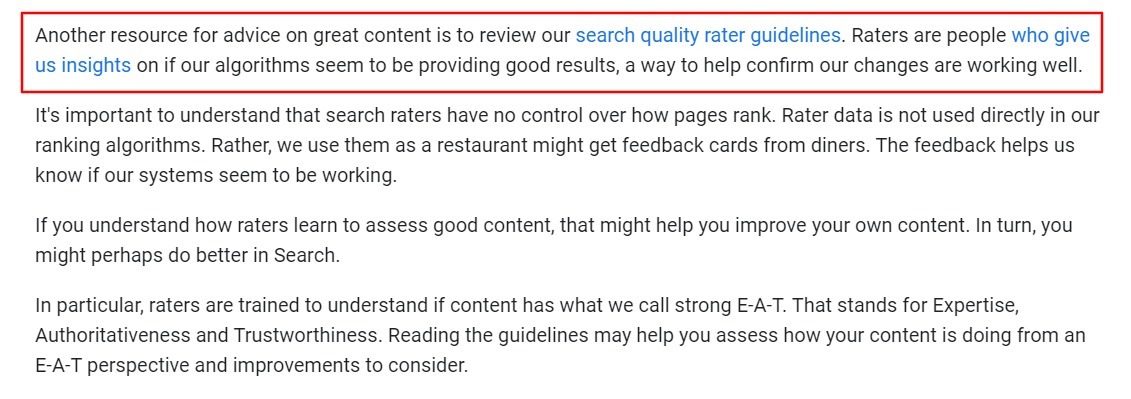
Google demands quality for better ranking but what’s exactly needed? The EAT principle explains this (consisting of): Expertise, Authoritativeness and Trustworthiness. These determinants connect to business subjects termed as ‘your money, your life’ (YMYL) label, such as health care and finance. Ways to achieve this include:
- Create buyer profiles: what kind of content do your clients want?
- Do intent research, paving the customer journey
- Apply these details for user based material frameworks (e.g. video for contemporaries)
Remember to apply this logic by backing any claims with data. Include reputable sources, like “.edu” and “.gov” URLs. Such authoritative sites’ return linking also satisfies this criteria.
18. Long-Form content enriches SERPs

Studies suggest that long text consisting of 3K + words attracts triple the traffic and quadruple distribution. Moreover, backlinks increase by around 3.5 times compared to the average length of about a thousand words. By focusing on long-form content, you can achieve greater search rankings. Nonetheless, maintaining quality is essential, as shareable & appealing resources are the ultimate aim here.
Merely consolidate your material into parts with H2 and H3 subheadings, to make it more palatable. Subheadings are specifically important for mobile sites and you should relate to relevant and highly scoring authoritative sources. Finally, the material needs to be easily distributable. Include identifiable sharing links in the headline and even in the summary for easy user access.
SEO material template tools can optimise your content for search purposes. Enter the ranking criteria and look for suggestions on length plus semantically linked keywords for inclusion as well as intricate analysis of top-ranking pages.
19. Featured snippets have become prominent
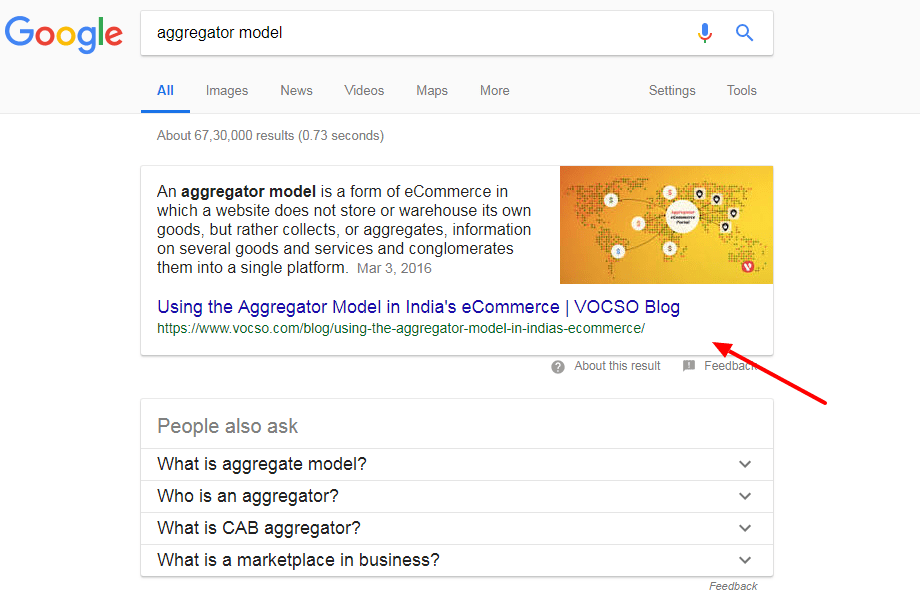
Designing long-term material isn’t the only aspect to improve Google rankings. Featured snippets (released a few years ago) are a prompt and concise strategy to shine. When inputting search criteria into Google, the box preceding the SERPs is known as a snippet.
A featured snippet is the ideal way to hit the first results page. This also reroutes most traffic away from competitors. Moreover, these uncover categorised details, typically as Q&A or a condensed manual. Rich snippets consist of images, star-ratings, product costs and so on. To write snippets, analyse query focused and relevant keywords. Google’s search feature ‘people also ask’ can help to generate further ideas.
20. Predictive search is refining
Google Discover launched in 2017, with a query agnostic search feature, part of their AI-driven tool lineup. The content advisory tool analyses user activity trends over a timeframe, then assimilating this behaviour. Such information helps understand user search intent and consequently what they’re looking for to read/watch/listen to.
Sporting nearly a billion active users, this independent page indexing ranks according to algorithms which evaluate content quality and user appeal. Although there’s no particular criteria, demographics, search history, app usage and schedules all contribute to this.
21. Effective SEO strategies need videos

Videos is here to stay, with over a billion YouTube subscribers and is projected to grow even further. Polish the video channel name and description to focus on themes.
Keywords remain important with the auto-complete feature, upon subject wise inputs and see what predictions appear in the search field. These are an array of suggested keywords, updating you precisely what are people searching for on YouTube.
22. Image optimisation is now even more important in searches
Image searches have revolutionised purchasing products via ecommerce, sourcing information, etc. Structure alt tag annotation and optimisation ensures longevity as Google develops this functionality.
Good resolution and suitable images plus file name personalisation (as well as labeling) helps to identify respective content. Apply alt tags, for crawling to organise and add images.
23. Semantic related keywords are gaining more importance

SEO experts always focused on primary keywords but now the significance of secondary keywords has been established. Ascertaining semantic search and intent optimisation is an increasingly crucial factor. Instead of merely focussing on query strings, Google also analyses context now. Interpreting user search intent extracts further information via linked primary and secondary keywords.
Such tools and creating material for answering audience questions is vital. Aim to optimise material for subject groups instead of solely focusing on keywords. Deploy structured data when needed and keep it personalised.
24. Sequence data and analytics for improved rankings

Data science augments understanding buyers, visualising campaigns and creating targeted messages. Analytics verify the URLs being crawled, identify referral sources, measure page loading times, index pages, manage redirects, handle response errors, bounce rates, etc. This also excludes pages from crawling to index and (pointlessly) flag unique traffic sources, such as suspect spam sites (affecting your EAT worthiness).
SEO analytics can collect this data, including SEMrush’s SEO Toolkit which empowers you with the pertinent tools ranging from rank monitoring to competitive research, on-page and technical SEO, link building, etc. Keeping up with suchlike guides your strategy. This enables you to address problems and continuously enrich your online presence.
25. Local search listings are important for SEO strategies
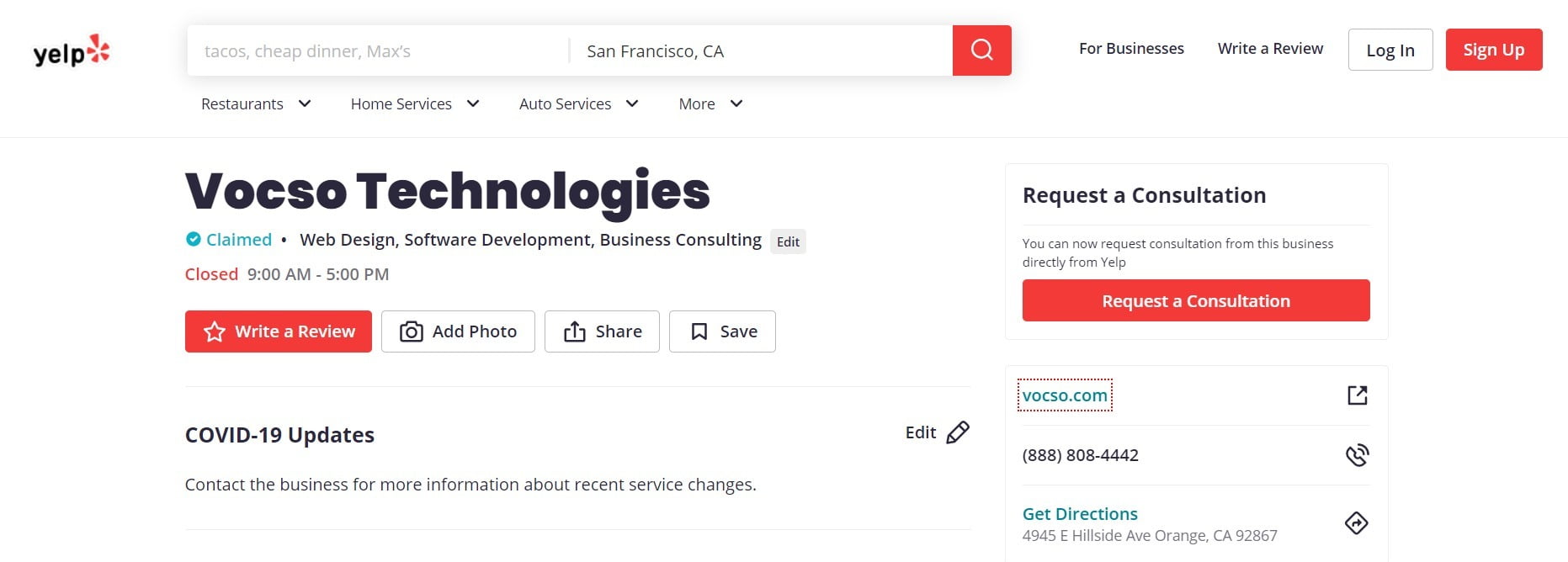
The internet is often seen as a global resource – which it is. Nevertheless, most people actually use search engines for local goods and services . Hence, local SEO is both developing and imperative too, as the frequency of zero-click searches rises as an accepted marketing practice.
A zero-click search means that the user question is intrinsically answered via a SERP. Therefore such users needn’t click on any ranked results. This increasing trend is courtesy of rising featured snippets. Most of these searches are local based, presenting the results on the SERP. How do you add your business into that local pack? Register a Google My Business page and establish a robust backlink profile. Check what kind of backlinks your competitors have for a better targeted understanding of everything.
26. Local SEO become progressively complex

Just until recently, Google would have local business suggestions based on proximity to the searcher and demographics. However, this is now changing and focusing more on fidelity and pertinence. Now businesses have greater control on influencing their local rankings. What’s more is that Google supplies the provision to do so with their Google My Business (GMB) which continuously incorporates new tools within its listings. Posts can now be published, answer queries, add products and services, create bookings and even establish messaging pathways. This can all be achieved merely from the listings (applying the zero click search principle). These advancements have done away with the need to even access the intended site itself. Wow, right?! Well these are some other SEO strategies to try out…
Moreover, as the pandemic began, Google promptly ensured to add a greater variety of options to the GMB listings. For instance, you can adjust your operating status or hours, raise funds, promote gift cards and even apply settings to emphasise safety features. To exemplify further, Google permitted remote health based listings here (despite forbidding it before). SEO experts perceive this to be the inception of a potential overhaul of guidelines. You can optimise this by considering it as an extension of your original site (or a functional preview). Be sure to monitor reviews, posts, Q&As, etc.
By targeting local communities and following the SERP local pack principle, people can find answers to their questions easily. It also can promote local goods and services, reducing competition by offering better quality.
27. Brand SERP Optimisation, Knowledge Graphs & Entities
Monitored brand SERPs and knowledge panels will become the accepted norm. Such detailed identity analysis, services offered and target audience will guide your future. Savvy marketers will familiarise themselves with this customised ‘knowledge graph’. Having access to details ranging from your search history, communication and social media forges a platform to do so. Google’s analysis of this process is essential.
Optimising your online presence (i.e. YouTube channel plus images) and Google’s listing of them is ideal. Currently your assets and how they function together on the SERP (along with your site) through multiple snippets is important. Understanding the intricacies within topics (entities and subtopics) and natural language processing (NLP) all boost Google’s rankings. This is needed to maintain pace with smart query analysis (now dominating conventional keyword research).
Google Discover is keyword agnostic, redefining optimisation via the knowledge graph API and its integration with subject layers. Initially tracking your brand’s ranking result, and subsequently producing quality content, means that you’ve nearly accomplished everything needed, as:
- Accurate and detailed organisational contingency
- Designing an identity in relevant knowledge bases (e.g. Wikidata)
- Driving ownership over your knowledge panel to implement posts by Google feature
- Physical businesses with offices and registering a Google My Business profile
28. Main Web Vitals & Page Experience Optimisation
Google is soon to introduce Core Web Vitals as a ranking criteria, later this year, hence page experience scores are now important. Without this, businesses do run the risk of competition. Insights by tools such as Lighthouse and Crux API that pertain to page load speed, mobile ergonomics, rendering, image optimisation and security frameworks require attention. Moreover, a page’s impact on the user experience is imperative (irrespective of site accessibility and analysis, as per search engine crawlers). Consider:
- If a page loads promptly and smoothly
- How quickly pages react to user activity
- How accessible and easily navigable on mobile devices
- Protection and security of the connection whilst browsing
This will facilitate strengthening your anticipated frameworks with coding revisions as well as current interface plus conversion rates. Universal site accessibility with measurable UX performance vs competitors are also significant. Check and apply machine learning to access your material and eradicate any blips during such trials. Now you’re prepared to shine and get noticed by Google with a great site and entice all visitors too!
29. Google’s BERT seeks corresponding intent
SEO Tips for maximising Google search rankings include observing trends and then following them. Information should be both meaningful and practical to users. Google has continually honed its algorithms to better interpret every user’s search intent for best results. Hence they released the Bidirectional Encoder Representations from Transformers, (AKA BERT). This enables them to read a user’s motive and furnish site listings which address these issues. Hence try to cater for particular questions, rather than general ones which may lower your ranking.
30. Google will go to greater lengths to satisfy the intent
BERT will localise the precise information you require, be it via rich snippets or otherwise. Create a featured one instead and optimise accordingly. Use FAQ schema and search access to maximise the potential of crawling. Knowledge graph panels, lists and tabular information formats all add to this. You can even skip to the precise written section or part of a video for the best outlook.
31. Keyword research will be more significant

Now over half of traffic is zero-click searches, meaning that the actual sites are never visited! Owing to thorough results in the SERP (business listings with menus and contact details, featured Snippets with answers, linked questions with respective answers), people can find the information they need even without fully typing their question! Don’t forget though that this is subject to your site, ads, business profile and blog material containing such keywords as per search intent. With SERP advancements and rivalry, it’s essential to spend time in this to identify keywords which can drive traffic and sales for your business.
SEO Guidelines involve the following process. Simply discover the long-tail and targeted keywords for your enterprise. Be creative to source these and Google’s Search Console will help to find such distinctive phrases. It’s paramount to analyse SERPs for any specific keyword prior to selection. This specificity will form a robust tool for the same (albeit low volume). The key is perseverance and obtaining keywords which rank well to produce ROI by driving revenue streams, channelising money. There are various powerful keyword research tools in the industry that you can use to find right keywords for your website pages.
32. SEO influencers

Influencers have many followers who can become your customers upon presenting your ideas to them. They effectively endorse or advocate your products/services by entrusting their audiences over a long period of time. Their support can majorly drive your ROI, so much so that almost 90% of marketers are convinced that this strategy is equally effective if not superior to others. This is a smart SEO trend to follow.
The problem is selectively finding who or what you need from them, as not all influencers will actually be that helpful or even useful. You need to find those who add value to your brand by targeting specific audiences, justifying their need.
This is how influencer marketing works along with SEO:
1. Building links
Backlinks remain an imperative ranking factor, however not everyone works, as they need to be fidelity ones. This is where and when an influencer can assist, as they promote the likelihood of acquiring suchlike for your site.
2. Brand presence & engagement
Influencers have the market knowledge about audience preferences, hence their material creation will be linked to your brand and audience. This content is not only distinctive but also meaningful as well as helpful. Content that goes viral also inspires search engines to rank the specific post or page at a higher SERP position. This must be worth distributing though, otherwise it’s pointless.
3. Social media traffic
This forms an integral part of sharing viral content, generating plenty of engagement and referred traffic.
33. Site security

With the advent of mobile devices and as technology continually evolves, site security is of increasing paramount importance. Even Google factors this during their ranking process. Such SEO trends are progressively imperative this year in 2022, as users become more savvy about associated risks in insecure environments. If visitors feel unsafe when visiting your page, they’ll cease revisiting and you won’t be able to retain them or even gain others. Consequently, your SERP rankings will also slip. Hence, you need to install an SSL certificate to safeguard your site and customer data exchanged/transferred over there. Even the plugins you use should augment this.
34. Mobile SEO is everything!

Mobile user experiences are profoundly important nowadays, especially since Google has uplifted mobile versions as being the primary ranking factor (over the past few years). Hence, the ‘mobile-first’ approach takes full precedence for SEO strategies.
Research has revealed that mobile web access user volumes are increasing. Therefore, your site’s prosperity is directly related to and dependent on how well you optimise this according to mobile devices (as this is the mainstay of viewing or visiting your site). Promoting a great user experience and journey is the way forward, without which you’re bound to run into trouble!
35. Automate further!

Considering the amount of SEO guideline related tasks which have now been automated since last year, there’s much scope now. Be it structured data generation, fidelity material or even traffic generation, the permutations are innumerable!
The sheer volume and quality of AI formulated content is set to drastically rise. This will impact search engines as they filter spam from the indexing process. Nevertheless, human intervention to ensure greater value for searchers will remain the aim to avoid any sanctions being imposed and maintain competitiveness. From an optimisation perspective, designing scalable tools by deploying automation will offer further choice for businesses. This practice is already underway and being applied with various features to update or revise sites. It’s akin to implementing another element whilst actioning your site functionality. This is certainly unwell.
The results are intriguing (especially for established experts within teams), as efficiency is driven and no need to deliberate over scheduling priorities. This allows users to concentrate on ancillary areas to enrich site functionality.
36. Scalability for SEO

These SEO tips are imperative to stay ahead of the competition and fairly simple to follow:
1) Enumerate every task, process, and workflow which is frequently undertaken and decide which ones can be automated or managed by a tool. A notification protocol which tracks major modifications such as keyword rankings, URL cannibalisation, page content or URL edits and so on.
2) Establish SoPs (Standard Operating Procedures) for any remaining tasks which cannot be automated, to save time (instead of repeatedly revising the methodology).
37. Engage customers with a brilliant user experience (UX)

Quality content isn’t the only aspect of creating memorable and engaging journeys for visitors – oh no. Site accessibility (convenient navigation) has become an SEO nightmare, especially with the advent and increased usage of mobile devices. It’s now essential to optimise all sites for mobiles (sorry webmasters!) Google pays much more attention to this now, compared to just a few years ago. If you consider Google’s position, it becomes apparent that they wish to encourage visitors to utilise their services as much as they can. Hence by improving your site ergonomics, you can establish a wonderful end-to-end trip.
Just imagine when visitors quickly abandon your site – Google then labels it as being immaterial. Consequently, your site’s SERP ranking would drop. Concentrate on ensuring that your site is ergonomic to use by paying heed to:
- Pages need to load and be ready for displaying ASAP
- Have a good site design (in terms of fonts, colors, and themes)
- Should be interactive and offer interesting content to engage visitors
38. Evaluate, adapt and apply

Businesses need to mould according to quickly evolving trends in order to remain afloat. Innovation is now more than ever key for success, as is identifying chances to improve (which may not be explicit). You need to take initiative and think critically about planning, development and being methodical to succeed. SEO strategies are essential to remain relevant and involve interpreting your target audience (instead of solely consumer activity). Analyse past trends by reviewing archives and then try to extrapolate on a live basis. Consider the financial, demographic and emotional aspects involved in search demand and link this to customer preferences. Deploy all resources available to really drive this (including tools and frameworks for an intelligence based approach).
Conclusion
The digital world is continually fluxing and so creativity is required. Designing stellar content is just one part of the success journey. Applying advanced SEO methods to fulfill the SERP criteria and persuade Google that your content is engaging for audiences is imperative. This will inevitably lead to a sustainable development cycle to grow your business.


